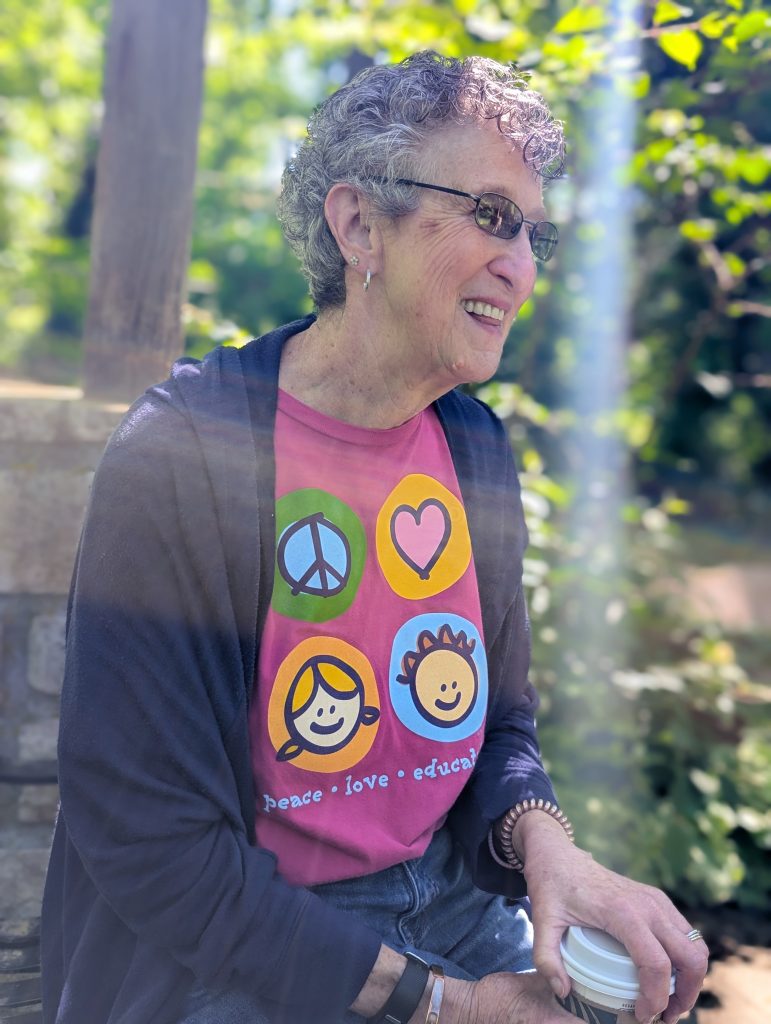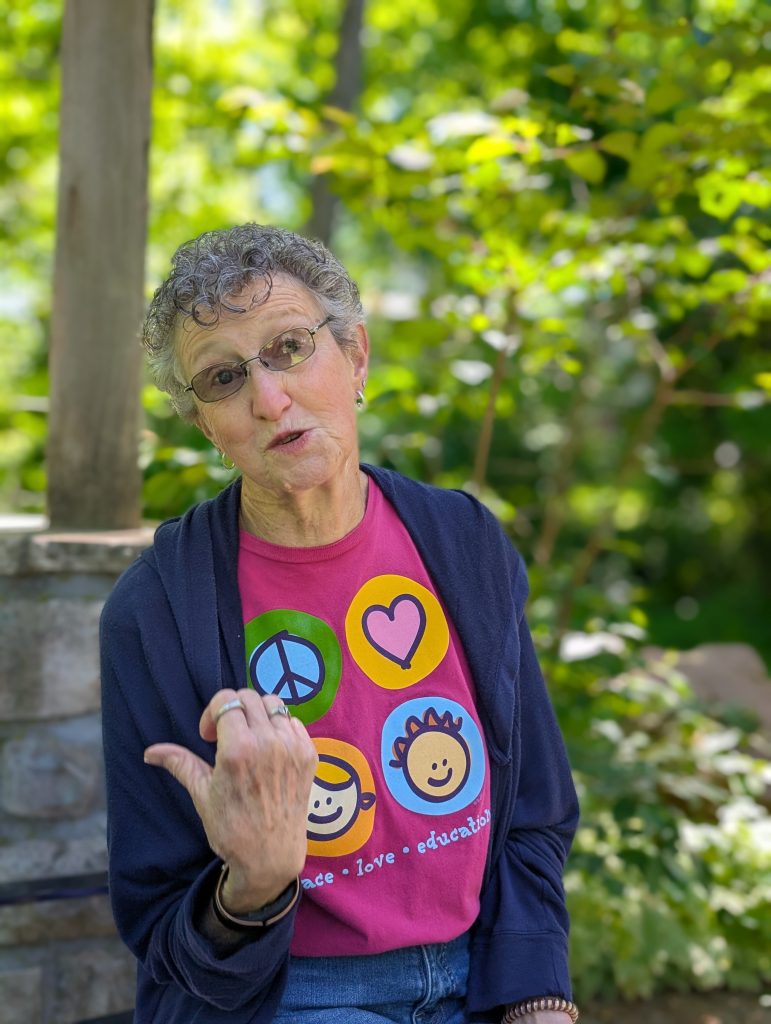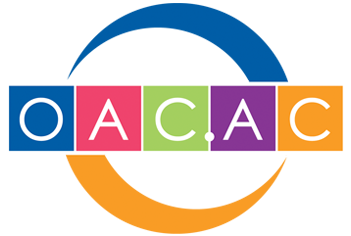05 Jun A Profile of Head Start Teacher Janie Calton
Adam Dixon, June 5, 2025

The memories come rushing out, as Janie Calton answers my scattershot of questions: ritual cardboard paper tube fights at Christmas, parent newsletters duplicated by hectograph, and being asked to adopt a child in her first year of teaching. I had called Janie back after playing phone tag for a few days, and I was feeling unprepared, having just moved our entire office into the conference room, so our 1980s-era, original-to-the-building carpet could be pulled up and replaced with some vinyl plank that will hopefully last another 40 years. Sitting at a makeshift folding table desk and holding my phone handset to my ear with my shoulder, I let fly with any question that comes to mind, and I realize her voice is familiar. In the past few weeks I called and emailed several people to interview and profile if they were willing. The names of all the current and former teachers, students, and parents that I had contacted were a jumble in my mind, so I pause and ask if she had worked for my agency. She had. Janie had worked for our Head Start in Marshfield, MO for 47 years and retired two years ago. Oh, THAT Janie, I think. My brain scrambles to reorient, as the voice on the line materializes into the now familiar face of the Janie I had met many times over many years. I continue, taking notes and listening and feeling rusty at this task, but at least we are no longer strangers. “What’s your favorite memory?” I ask. Janie answers, and, as luck would have it, the quality of her answers exceeds the insightfulness of my questions. “Cardboard tube fights after wrapping presents for the kids,” says Janie. I pause and ask for clarification, imagining feral three-year-olds let loose in the classroom with tube-swords in hand. Janie laughs and corrects my mental picture: “No, no, no . . . The staff! Friday when the kids were out, we would take wrapping paper tubes, turn on Christmas music as loud as we could, and have paper tube fights after wrapping the presents.” It had become a tradition of the sort that, initially, summons a silly childhood nostalgia, but eventually leads you to a simple truth of adulthood: silly children doing silly activities make up the best parts of us. Then Janie recounts a particular afternoon in December when the Director and Assistant Director of the program visited and were ambushed by the staff lying in wait like cardboard tube assassins in colorful, early childhood educator attire. She chuckles and notes with what I can only assume is a wry grin, “Kimberly and Diane never quite knew what to do with me.” She moves on to her friend, Vickie Letterman, who was Janie’s long-time teaching partner. “We taught together for 42 of my 47 years. We were so in sync that we would pick up each other’s slack when we forgot to do something,” says Janie after explaining a common scenario where she would arrive early the next morning to catch up on a missed task only to find Vickie already on site doing exactly the thing Janie had forgotten to do. Together they orchestrated many schemes to pull off a number of . . . creative educational opportunities. Janie’s husband, a butcher, would dry out beef bones, so Janie and Vickie could hide them on the playground. “We’d take a big cow hip bone and make it look like a dinosaur bone. The kids would dig them up, and we’d put them together to build a skeleton.” says Janie. Laughing, she describes all the odd skeletons they built. She concludes the story with Vickie hiding behind the dumpster one day after playing archeologist. Vickie roared and Janie screamed, “Dinosaur!” And they all ran to the door. It had rained recently and some standing water on the trashcan lid splashed on the kids as they rushed inside. The kids were convinced the only possible explanation was the dinosaur, having failed to catch them, must have peed on them instead. Janie and Vickie had many adventures together with the kids—raising and releasing butterflies, book reading tea parties under the tables, and children led theater productions complete with costumes made of blankets and reams of paper painted by Vickie. “Vickie was an amazing artist, and we were lucky to have her share her gift with us,” says Janie.

Janie more or less walked right out of the halls of her high school and into a Head Start center. In her first interview for the open Teacher Assistant position, she was asked how she would handle a child being disruptive. “I told them I’d whip them until they straightened up.” She says wincing, still embarrassed all these years later. She continues, “I didn’t know any better. That’s how I was raised.” She didn’t get the job initially, but the person they hired instead lasted all of two weeks before learning what the vast majority of us learn at some point or, at least, wisely come to assume: early childhood education isn’t for everyone. So, Janie got a call back for a second interview. “They asked me if I was willing to learn the Head Start way of teaching children, and I said I was.” She wasn’t dogmatic. It had just never occurred to her that there were other ways of dealing with discipline, and it turned out that Janie was a natural. She would ultimately beat her predecessor’s two-week tenure by around 2,442 weeks. However, she would find that not every challenge she faced would have a satisfying conclusion. By the end of that first school year, one of the families she served needed to move across the country for work, and they did not have the money to move and care for all their children. Their youngest, Elizabeth, had developed a strong bond with Janie, so the family asked if she could adopt their child. Janie has a big heart, and she grew up in a family without a lot of money, so she was no stranger to the complications that living a life with too little can bring. She considered the possibility, but it could not be. Janie was young and on her own, and the ethics of such an undertaking would have been murky at best. She never saw Elizabeth or her family again, but that memory is still raw. Some memories bring a smile and some bring a tear, but Elizabeth always brings both for Janie.
The magic of managing a classroom and building rapport with children (or anyone really) is hard to teach—maybe even impossible to teach. There is no trick to it. No simple, five-step method to success. It seems only to manifest as an intuitive knack one just has (or doesn’t) that must be honed by years of hard work, practice, and the varied experiences you absorb along the way. That and the tenacity to keep pivoting until you find the right combination of levers to pull to keep the plates spinning and the children all standing in line with their hands to themselves. If one of Janie’s students couldn’t sit still on the carpet for reading time, Janie would take a banana box from the kitchen. “I’d call it their throne,” says Janie. “They’d decorate it however they wanted, and I’d have them take that to the carpet to sit in for story time. And it worked.” Sitting still and listening is one of many concepts Janie taught over and over (and over) again. The continual challenge she overcame day after day was to find and supply just the right custom conduit for each child that leads them into that elusive and comforting understanding we never stop seeking. We all get older and, hopefully, wiser, but the need for an occasional banana box throne knows no age. Janie is a master of her craft and centers her methods around always encouraging the behaviors she wants to see in the world. “If you want to receive joy from the world, you have to put joy into it,” she says as we sit on a park bench, so I can get some pictures. Even for me, fully grown and fairly well-behaved, she is quick with a compliment as she hands me the coffee she graciously bought and a dozen farm fresh eggs with “joy” written in marker across every other egg—literally and figuratively putting joy into my day. For the hundreds of kids she took under her wing, Janie was that conduit of understanding, supplying endless encouragement, kind words, and a simple mantra for all comers to recite when they entered the classroom for the day: “I am here. I am safe. I am welcome.”
Go anywhere in the world you want, and, without fail, there will be a community whose foundation relies upon a core cohort of folks like Janie. Folks who work tirelessly for little or no money or wide recognition. Folks without a fancy title or a seat on a board or their name emblazoned on a color-coded billboard. We pile all of society on top of them with little thought given to consider the consequences should they choose to shrug off that weight, and it is with shame and sadness that I acknowledge my relief that, for reasons known only to themselves, they choose not to. We owe them such a debt. Janie who, even now, raises chickens, not to exploit a favorable market, but to share the cackleberries (as she would call them) with everyone around her: friends and family, neighbors and strangers, and at least one wayward IT guy moonlighting as a magazine profiler. There was no tickertape parade sending Janie off into retirement at the end of her Head Start service. As far as I am aware, no statues have yet been built in her honor. There were no end-of-year bonuses to purchase vacation homes on the beach or maturing stock options given to her as a reward for her tenacious grip on the fabric of civilization—her fingers stitching together the frayed seams by sheer force of will. For her own well-earned whimsy and adventure, Janie had to save $25 a paycheck for decades to realize her lifelong dream to float the Mississippi like Huck Finn. Janie is as brilliant and gifted as anyone I’ve ever met. A magician with beef bones, craft paper, and blankets, conjuring dinosaurs and fancy-dress dinner parties in play forts under 30-year-old Correll adjustable tables. Janie made warm and welcome the humble rooms that made up her Head Start classroom. She taught and held and wiped tears and boogers off our laughing, shining beacons of humanity—the best of us—our silly children. I don’t have access to money or fame or complicated investment securities. I do have a piece of her story to share, though, and that ain’t nothing.




